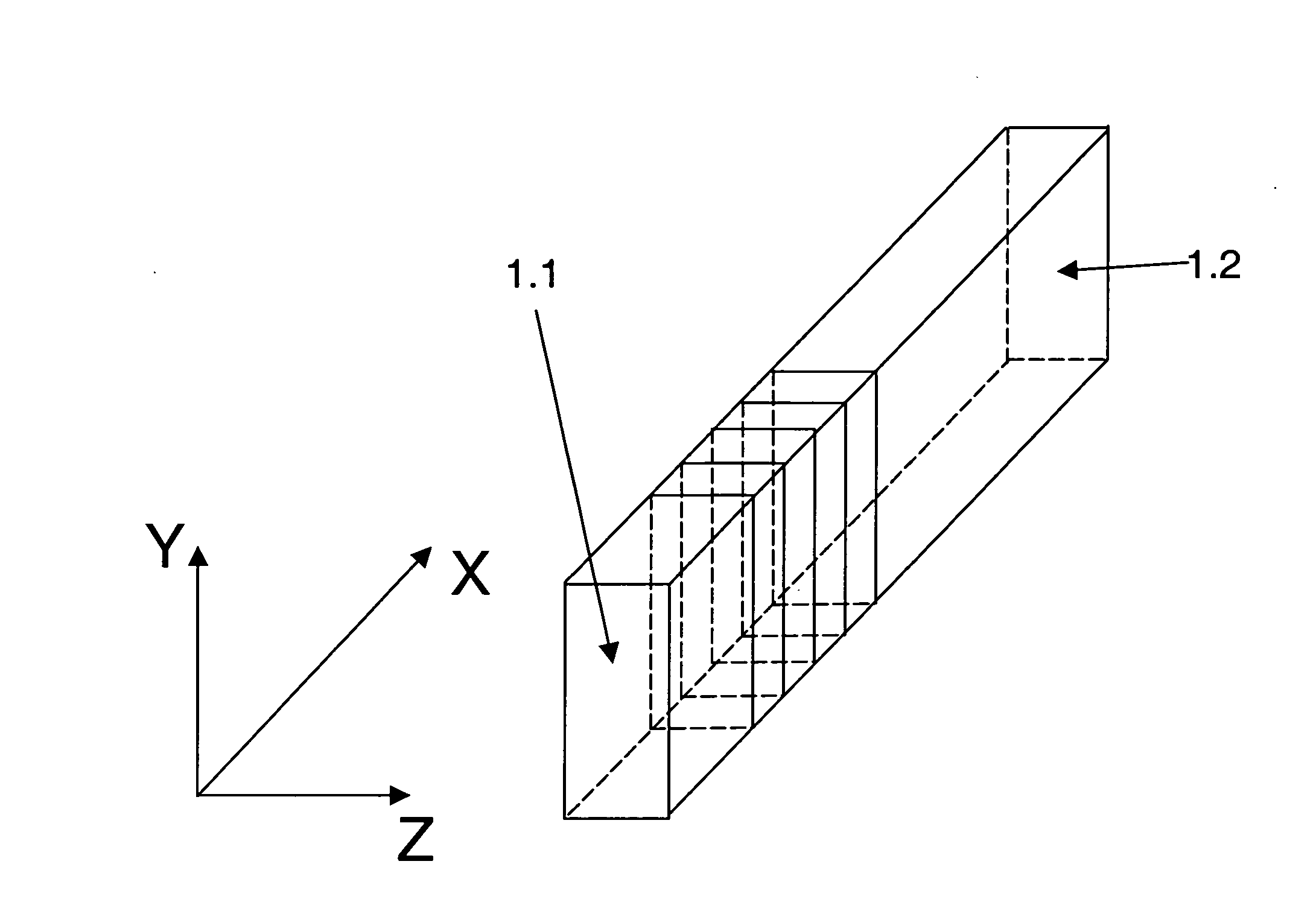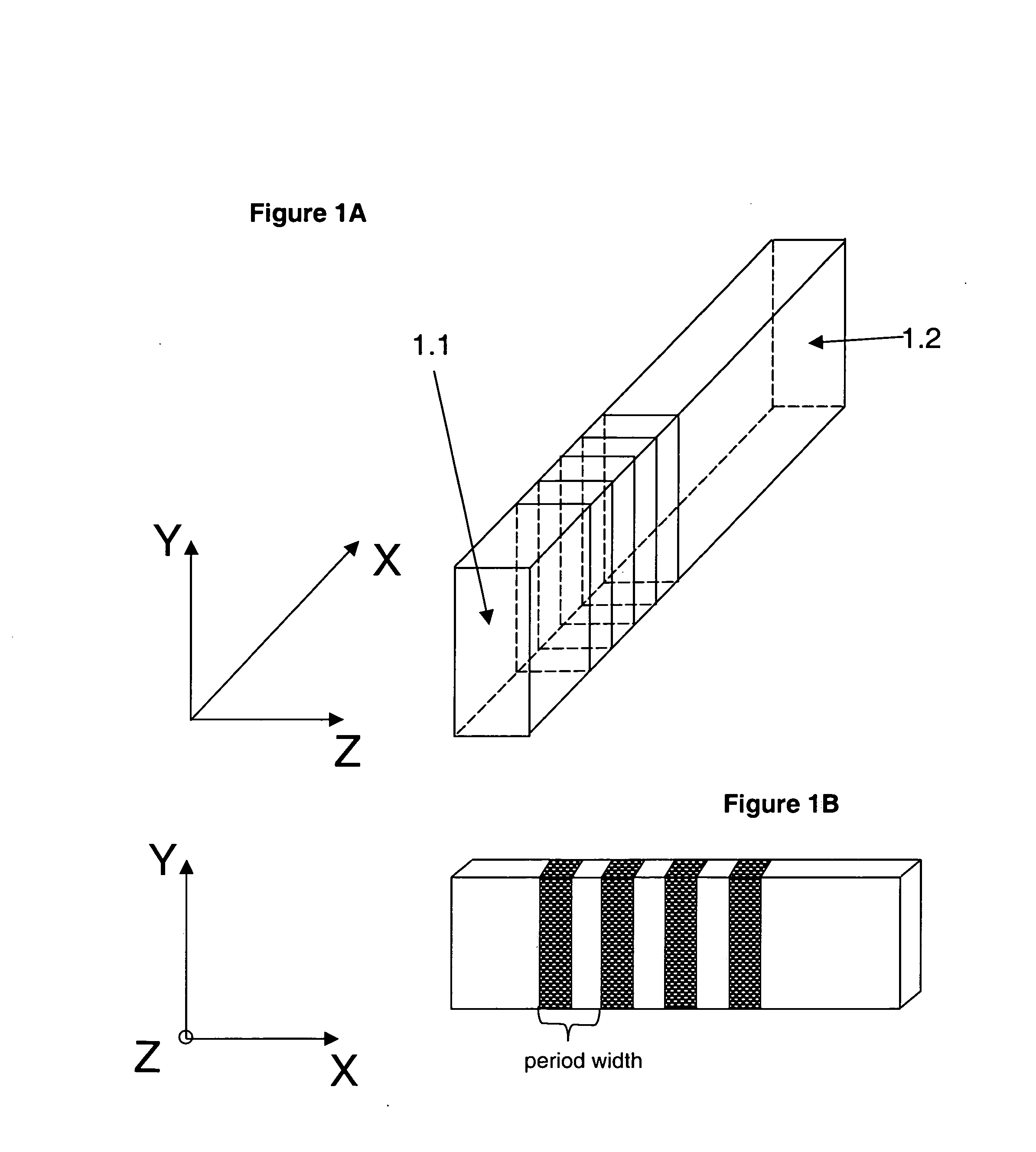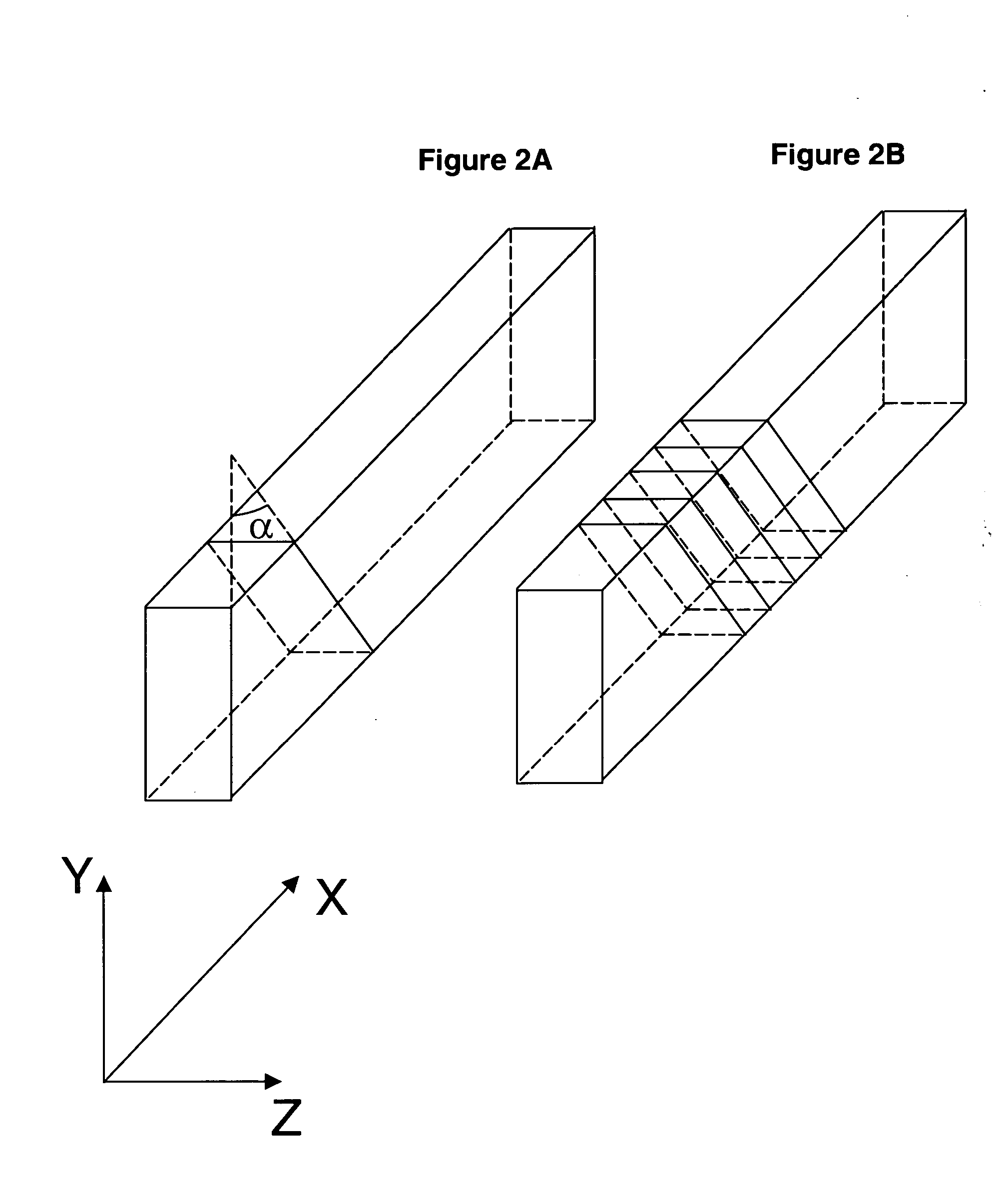Frequency doubling crystal and frequency doubled external cavity laser
a laser and crystal technology, applied in the field of frequency doubling crystals and solid-state lasers, can solve the problems of significant limitations of argon ion lasers, limited operational life (mttf 5,000 hours), and power consumption (2.5 kw), so as to eliminate the net astigmatism of the apparatus 40, eliminate the effect of beam offs
- Summary
- Abstract
- Description
- Claims
- Application Information
AI Technical Summary
Benefits of technology
Problems solved by technology
Method used
Image
Examples
Embodiment Construction
[0037] The improved frequency doubling crystals of the present invention can be advantageously utilized in conjunction with a wide variety of solid state lasers, including intracavity and VECSEL configurations. Moreover, we have identified a particular type of laser configuration, namely, a doubled external cavity semiconductor pump laser (DECSL) which, when utilized in conjunction with the improved nonlinear crystals fabricated in accordance with the teaching of the present invention, provides a particularly advantageous laser system which can emit light at selected wavelengths in the 300 to 700 nm range and demonstrates superior performance and reliability. Details of a DECSL laser system for producing 300 to 700 nm light using certain existing frequency doubling crystals are described in co-pending, commonly assigned U.S. patent application Ser. No. 10 / 966,309, filed Oct. 14, 2004, the disclosure of which is incorporated herein by this reference.
[0038] As previously discussed, f...
PUM
 Login to View More
Login to View More Abstract
Description
Claims
Application Information
 Login to View More
Login to View More - R&D
- Intellectual Property
- Life Sciences
- Materials
- Tech Scout
- Unparalleled Data Quality
- Higher Quality Content
- 60% Fewer Hallucinations
Browse by: Latest US Patents, China's latest patents, Technical Efficacy Thesaurus, Application Domain, Technology Topic, Popular Technical Reports.
© 2025 PatSnap. All rights reserved.Legal|Privacy policy|Modern Slavery Act Transparency Statement|Sitemap|About US| Contact US: help@patsnap.com



